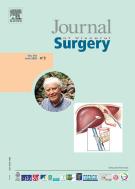Unplanned rehospitalizations after abdominal wall surgery: Update according to a review of the literature - 12/04/25
 , Manon Viennet b, Jean-François Gillion c, Niki Christou d
, Manon Viennet b, Jean-François Gillion c, Niki Christou dHighlights |
• | In the literature, UR rates range from 2.7% after groin hernia repair, to 5.1% after open or laparoscopic primary ventral hernia repair, and 12% after complex incisional hernia repair. |
• | Postoperative complications are the major cause of UR irrespective of the type of parietal surgery. |
• | Thromboembolic events, hemorrhage, and urinary retention are the main causes of UR within 30days after groin surgery, while bowel obstruction, surgical site complications, and urinary retention are the leading causes of UR after primary ventral hernia or incisional hernia repair. |
• | The typical profile of the patient at-risk of UR is the obese, diabetic patient, on therapeutic anticoagulation, ASA≥3, with a low socioeconomic status, operated on in emergency situations and after prolonged surgery. |
• | Prehabilitation and screening for risk factors make it possible to adapt postoperative surveillance, for example, by planning earlier postoperative follow-up. |
Summary |
Unplanned readmission (UR) is defined as an unforeseen readmission of a patient within 30days of discharge to the same facility for a reason other than mental health, chemotherapy or dialysis. In the literature, UR rates after groin hernia repair range from 2.7 to 5.1% after open or laparoscopic primary ventral hernia repair, and 12% after complex incisional hernia repair. Postoperative complications are the major cause of UR, irrespective of the type of parietal surgery. Risk factors for UR include diabetes, smoking, chronic obstructive pulmonary disease, obesity, therapeutic anticoagulation, ASA score≥3, long duration or emergency surgery, and low socioeconomic status. Anticipating and managing these risk factors can help limit UR.
Le texte complet de cet article est disponible en PDF.Keywords : Unplanned readmission, Hernia, Incisional hernia repair complication, Abdominal wall surgery
Plan
Bienvenue sur EM-consulte, la référence des professionnels de santé.
L’accès au texte intégral de cet article nécessite un abonnement.
Déjà abonné à cette revue ?

